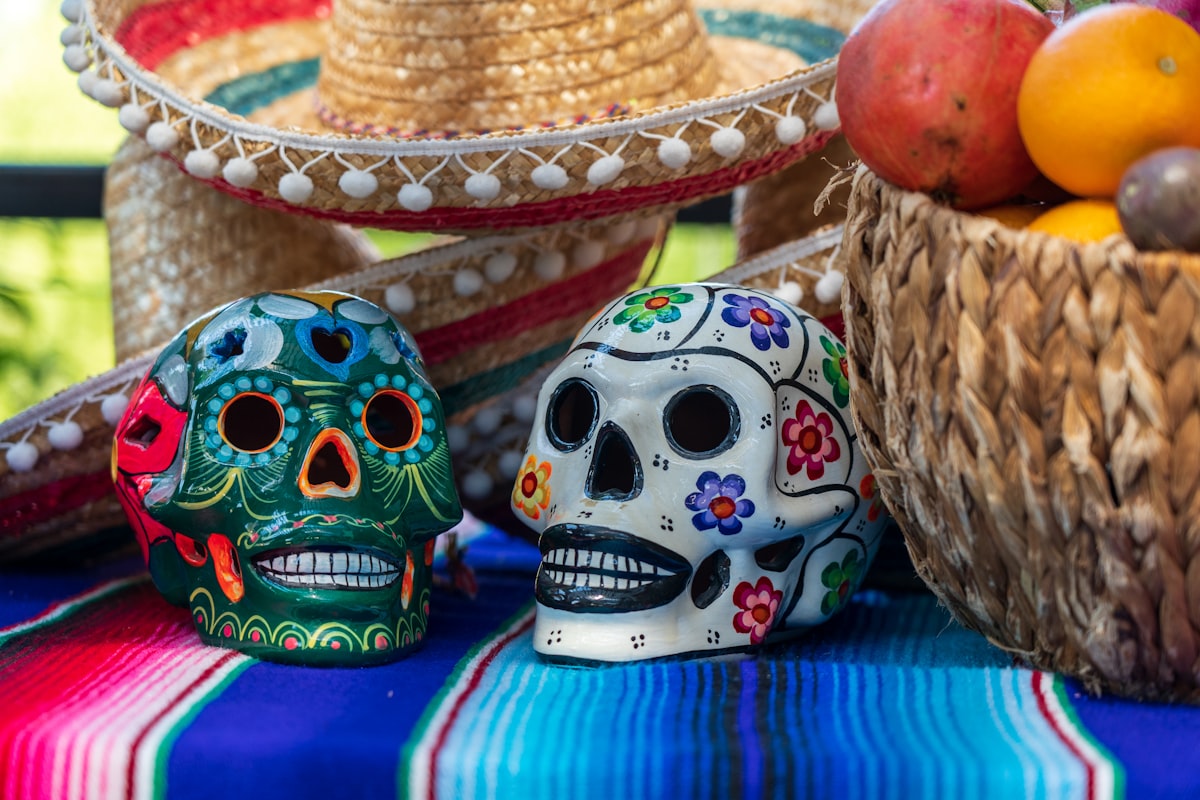day of the dead

Yesterday was Halloween in the US, and today and tomorrow, we celebrate its Mexican counterpart Day of the Dead, or Día de los Muertos. While the former is more or less a juvenile event involving candies, cosplay, and partying until late, the latter is a much more mature and poignant holiday where families gather and honor loved ones who have passed. It’s therefore a three-day remembrance of the philosophical concept of Memento Mori, and as author Ryan Holiday puts it, “a kind of collective bereavement mixed with the fun of a jazz funeral.”
Every year on this particular day, it is believed that the boundary between the realm of spirits and the world of the living fades away, allowing departed souls to reconnect with their families.
In commemoration of this occasion, numerous Mexicans adorn their faces with calaveras (skulls). Women don vibrant dresses or blouses paired with handmade flower crowns, while men opt for suits and hats. Families assemble ofrendas, including photographs and personal belongings of the deceased, on altars adorned with marigolds. The vivid orange hues of these flowers line the path back to the living, enticing souls with their fragrance and vibrancy. Across the country, feasts featuring tamales, pan de muerto, calaveras de azúcar, and other Mexican delicacies are served as part of the celebration.
Día de los Muertos is a vibrant and animated event that serves as a commemoration and celebration of those who have departed from the mortal realm. It represents a heartfelt tribute to the deceased, providing families with a precious opportunity to come together and reconnect with their loved ones.
Also, it’s a wonderful time to contemplate our mortality and come to terms with it. It’s much better to accept the ephemeralness of human life and our finite existence on this planet, rather than living under the false illusion that we are all invincible beings having endless journeys.
So, no matter where you live, go ahead and celebrate the Day of the Dead. Remember the people who are no longer with you and cherish and enjoy those you are fortunate enough to still have around you. What you appreciate appreciates. Let nothing else matter at this point in time!
. . .
On this special occasion, here’s one more ghost story from the bygone times.
Simonides of Keos, a renowned ancient Greek lyric poet, is the subject of an intriguing tale documented by the Roman orator Cicero in On Divination 1.27.56 and also in the Palatine Anthology.
According to the story, while strolling along the shores of Lesbos, Simonides stumbled upon a lifeless body in the water, presumably that of a recent drowning victim. Without any identifying information and no one having come forward to claim the body, Simonides took it upon himself to retrieve the corpse from the water and accorded it a dignified funeral with full honors, despite being oblivious to the deceased individual's identity.
Several years down the line, Simonides prepared for a voyage across the sea from Italy to Sicily—a journey deemed remarkably safe. However, just as he was about to embark on the ship, a spectral sailor materialized before him. Pointing at the vessel he was intending to board, the apparition solemnly warned, “Not that one!” The ghostly sailor then mysteriously dissipated into the air. Taking heed of the spectral advice, Simonides opted for a different ship. Subsequently, he discovered that the vessel he had initially considered had encountered a tempest, resulting in its sinking and the tragic loss of all passengers. It dawned on Simonides that the spectral sailor was the ghost of the man whose burial he had overseen years ago on the shores of Lesbos.
In the realm of folkloristics, this narrative falls under the category of a “grateful dead” story, wherein a deceased individual receives a kindness from the living and, in gratitude, later reciprocates the favor.


